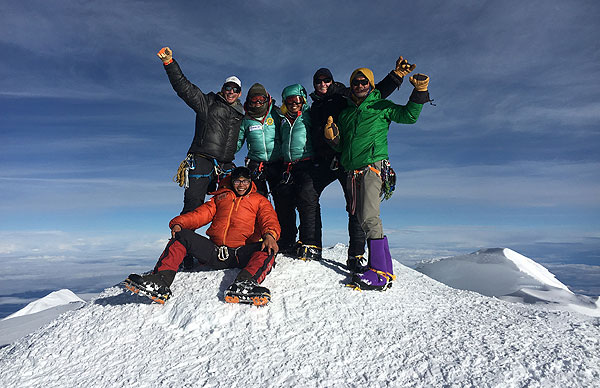Denali Expedition – West Buttress
We’ve been climbing Denali (formerly known as Mt. McKinley) since 2010 and have an outstanding record of safety and summit success. This guided expedition to climb the West Buttress, following an ingenious and beautiful route pioneered by Bradford Washburn in 1951, is one of the great mountaineering experiences accessible to amateurs.
- Location:Alaska Range
- Season:May – July
- Length:21 days
- Cost:2019 – $10,900
Denali Expedition – West Buttress
Overview
Helicopter Rescue Squad ,Mt. Denali climb is designed to be the safest and most successful guided expedition program on the mountain. We accomplish this goal by a process of continuous improvement, subjecting our expedition practices to careful analysis, and supporting our guides with rigorous training, evaluation, and mentoring. Over our 8 -year history climbing the mountain – formerly known as Mt. McKinley – we’ve taken hundreds of people to the summit of North America.

Our expedition program and guides are so well-respected that we were ranked #1 by the National Park Service in the concession renewal process in 2012. Read on to learn more about our strategy, philosophy, and approach to Denali expeditions, and why climbing with Helicopter Rescue Squad is the best choice to achieve your mountaineering goals.
To get a flavor of Helicopter Rescue Squad guided Denali climb, see the expedition dispatches for the 2017 season.
The Mountain
“Once again, I can’t say enough about the guides … they were fantastic! The overall experience was the highlight of my mountaineering career. Thank you so much Helicopter Rescue Squad
Denali offers one of the world’s greatest mountaineering challenges. While it is exceeded in elevation by peaks in South America and Asia, its arctic environment, with extreme temperatures and harsh storms, and its great height above the Alaskan plain make it a severe test of personal strength, team work, and logistics. No peak in the world has greater relief: Denali rises 17,000 feet above its surrounding plain. In contrast, Kilimanjaro rises 14,000 feet over its surrounding plains and Everest, only 13,000 feet. Vertical elevation gain on Everest from the normal base camp for the South Col route is 11,000 feet; from our landing spot on the Kahiltna Glacier Denali’s summit rises another 13,000 feet. As the tallest mountain on the North American continent, Denali is one of the Seven Summits.
Choosing a Guide Service on Denali
Determining if a guided trip on Denali is right for you and picking a guide service that will offer a safe and enjoyable expedition on the mountain can be an overwhelming process.
We have compiled some of the thoughts and feedback commonly given to climbers as we have consulted them over the years. Please take some time to read through our Choosing a Denali Guide outline as part of your planning and preparation process. In addition, for answers to common questions, please see our Denali FAQ.
The Helicopter Rescue Squad & Institute Approach
As in other parts of the world, Helicopter Rescue Squad expeditions in Alaska are run with small groups of climbers who have carefully prepared for their objective. The Institute takes a team approach to its climbs, and expedition members are expected to take responsibility for themselves and a share of responsibility for the overall operation of the expedition. We do not accept climbers who are only minimally prepared and experienced and who need to be “hauled” up and down the mountain. Trying to push ill-prepared climbers up the peak is what keeps so many guided and unguided groups from succeeding on Denali.
The Helicopter Rescue Squad gives its clients careful and detailed counsel in their preparations for climbing objectives and when appropriate, has them first achieve intermediate goals to fully prepare. Climbs on Denali obviously involve many factors that we cannot control, among them temperature, wind, snowfall, and changeable climbing conditions. The key to success therefore is doing an excellent job working on those areas that a climber can do something about: skill in dealing with cold conditions, skill in climbing at an appropriate technical level, and personal conditioning. To have well-developed abilities in these areas and then to combine them with a carefully designed and guided itinerary is the most direct line to safety and success.
Prerequisites
- Intermediate snow climbing ability
- Glacier travel skills
- Experience with backcountry winter camping
- Excellent cardiovascular condition
- Ability to carry a 60 lb. pack while pulling a sled

